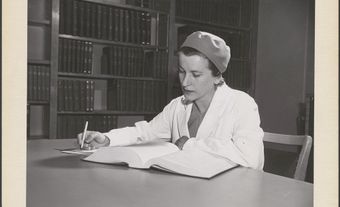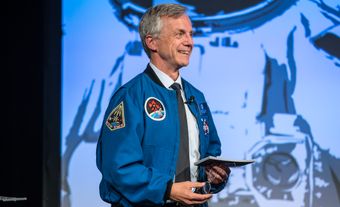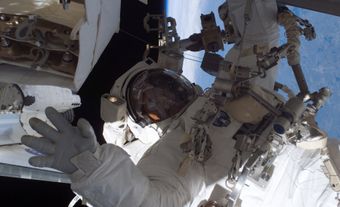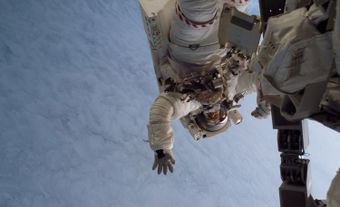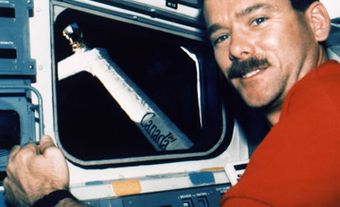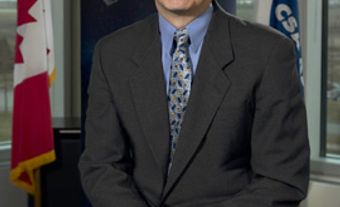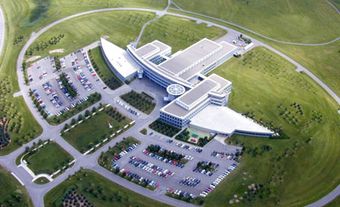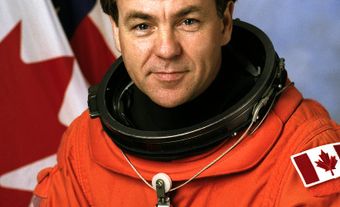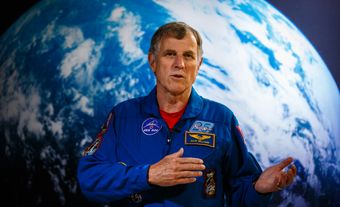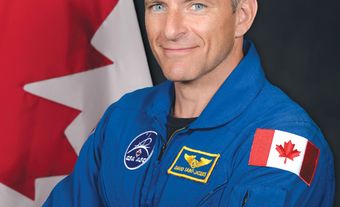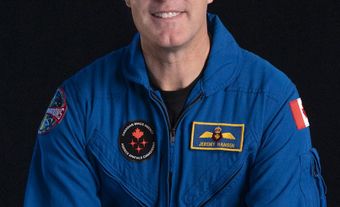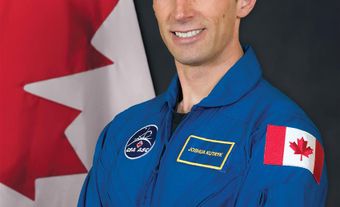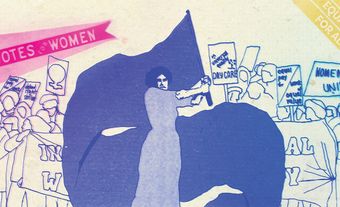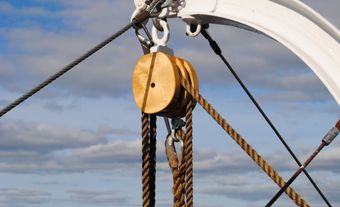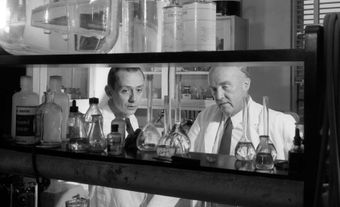Roberta Lynn Bondar, CC, OOnt, FRSC, astronaut, neurologist, physician, educator, photographer (born 4 December 1945 in Sault Ste Marie, ON). Bondar became the first Canadian woman and second Canadian in space when she flew aboard the American space shuttle Discovery in 1992. A doctor specializing in the nervous system, she is a pioneer in space medicine research. Bondar is also an exhibited and published nature photographer. She established The Roberta Bondar Foundation to educate people about environmental protection through art, and she currently serves as one of the organization’s directors.
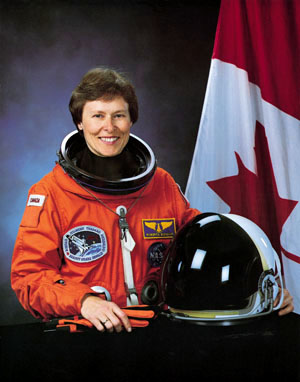
Early Life and Education
Roberta Bondar is the second of two daughters born to Edward and Mildred Bondar. Edward worked as an office manager for the Sault Ste Marie Public Utilities Commission, and Mildred was a business and commerce teacher. The couple’s first child, Barbara, was born the year before Roberta, in 1944.
Roberta was interested in space as a child: “When I was eight years old, to be a spaceman was the most exciting thing I could imagine.” She was given a camera when she was young, which sparked her interest in photography. She was involved in sports, Girls Guides, the YMCA, and church groups in her youth.
Bondar was also very interested in science; her father built a laboratory in their basement so she could conduct experiments. She led the science team at her high school (Sir James Dunn Collegiate and Vocational School) and received honourable mention at the Canada Wide Science Fair in Grade 13. Bondar spent summers working as a science researcher with the federal Department of Fisheries and Forestry in Sault Ste Marie. Her high school guidance counsellor tried to dissuade her from pursuing science in university, believing that it wasn’t a subject for girls, but Bondar persisted.
Bondar attended the University of Guelph, where she completed a Bachelor of Science in zoology and agriculture in 1968. During this time, she also received her pilot’s license. She continued in higher education, earning a Master of Science in experimental pathology from the University of Western Ontario in 1971, a PhD in neuroscience from the University of Toronto in 1974, and a Doctor of Medicine from McMaster University in 1977.
Medical Career
Roberta Bondar worked as a clinical science researcher and neurologist, a doctor who specializes in the nervous system. She completed post-graduate work at Toronto General Hospital, the University of Western Ontario, Tufts New England Medical Center (Boston), the Playfair Neuroscience Unit of Toronto Western Hospital, and the Pacific Vascular Institute (Seattle). She was admitted as a Fellow to the Royal College of Physicians in 1981 for neurology. Bondar was an assistant professor of medicine (neurology) at McMaster University from 1982 to 1984.
She has also served as a member of the Ontario Premier’s Council on Science and Technology, as a civil aviation medical examiner and as a member of the scientific staff of Sunnybrook Health Sciences Centre in Toronto.
Canada’s First Woman Astronaut
In 1983, the National Research Council of Canada created the Canadian Astronaut Program (now part of the Canadian Space Agency) to recruit Canada’s first astronauts. Roberta Bondar applied immediately. After six months of interviews and tests, she was chosen as one of six Canadians admitted to the program (see Canadian Astronauts). Her research and clinical work on the nervous system had immediate relevance to experiments planned for the first Canadian spaceflight.
Did you know?
Approximately 4,300 people applied to the Canadian Astronaut Program in 1983. Only 11 per cent of the applicants were women, according to author Joan Dixon’s biography of Bondar.
In February 1984, Bondar moved to Ottawa and began her astronaut training, which would eventually take her to NASA in Houston, Texas. While still in the astronaut program, she held other positions in Canadian universities and hospitals. Bondar quickly assumed an important role in Canada’s space industry. In 1985, she was named chairperson of Parliament’s Canadian Life Sciences Subcommittee for the Space Station. In 1984, Marc Garneau became the first Canadian in space, but Bondar’s opportunity would still come.
In early 1990, Bondar was designated prime payload specialist for the first International Microgravity Laboratory Mission (IML-1). Payload specialists are specialized crew members who carry out the purpose of the mission. In Bondar’s case, this involved conducting life-sciences and materials experiments. She worked with scientists from 16 countries to develop the experiments she would conduct in space. The original flight was planned for December 1990 but was delayed several times. Training for the mission included preparing for the physical toll of space travel, practising the experiments, and rehearsing escape and emergency procedures.
Mission STS-42
On 22 January 1992, Roberta Bondar became the first Canadian woman, the second Canadian, and the first neurologist in space. She flew aboard space shuttle Discovery, the only Canadian and woman of the seven crew members of NASA Mission STS-42. The mission was originally planned to last ten days, but changes in shuttles due to repairs shortened it to seven days. On the sixth day after launch, enough fuel remained to extend the mission to eight days.
The IML-1 payload specialists began working three hours after lift-off and had to work in twelve-hour shifts to complete the experiments in time. During the mission, Bondar and the other astronauts conducted more than 40 experiments in the Spacelab and on the middeck to discover means to allow future astronauts to undertake longer flights in space. The data from their experiments on the shuttle would take years to analyze. The crew had also been trained to take photographs of Earth from space, a task which Bondar enjoyed because of her interest in photography.
Did you know?
Astronauts could take some personal items on the shuttle. Bondar took a box of Girl Guide cookies and maple candies with her into space.
Being in space with low gravity meant that the astronauts had to adjust to changes in their bodies. In such weightless conditions, astronauts’ spines can lengthen by as much as 2–4 cm, which can cause back pains for some. Bondar reported that she didn’t need her glasses while in space, likely because of the effect of microgravity on the eye’s fluids. This was fortunate, as her glasses had floated away and become lost early in the mission.
After 129 orbits around Earth, Discovery landed in California on 30 January 1992. The astronauts then underwent testing to compare how their bodies responded to conditions in space versus conditions on Earth.
Bondar left the Canadian Space Agency on 4 September 1992. She continued to pursue her research in space medicine and led NASA research teams that studied data from spaceflights to apply to medicine on Earth.
Career after Space
After retiring from the Canadian Space Agency, Roberta Bondar studied professional nature photography at the Brooks Institute of Photography in California. She published a visual and written chronicle of her experiences in space, Touching the Earth, in 1994. The next year, she published On the Shuttle: Eight Days in Space, a children’s book co-written with her sister, Barbara. Bondar has had several national and international photography exhibitions and has published three other books of photographs, including Passionate Vision (2000), which documents Canada’s national parks.
In 2003, Bondar was appointed chancellor of Trent University. She held this position for two terms, until 2009. That year, she established The Roberta Bondar Foundation, a not-for-profit organization that seeks to educate people about environmental protection through art (see also Environmental and Conservation Movements). Bondar donated many of her nature photographs to the foundation’s exhibition and learning collections. The organization works at the intersection of two of her greatest interests: science and photography. She remains on its board of directors.
Selected Honours, Awards and Tributes
Roberta Bondar’s achievements have earned her many national and international recognitions. In Canada, there have been schools, resource centres, gymnasiums and scholarships named after her. She has been appointed to honorary positions in dozens of organizations and is a member of a variety of associations. Bondar was featured on a Canadian postage stamp as part of a Canadian astronauts series. In addition to these tributes, she has earned many other honours throughout her career:
- Fellow, Royal College of Physicians of Canada (1981)
- Co-Recipient, The F.W. (Casey) Baldwin Award, Canadian Aeronautics and Space Institute (1985)
- Honorary Life Member, Canadian Federation of University Women (1985)
- Honorary Life Member, Girl Guides of Canada (1986)
- Honorary Doctor of Laws, Mount Allison University (1989)
- Doctor of Humane Letters, Mount St. Vincent University (1990)
- Honorary Doctor of Science, University of Guelph (1990)
- Senior Fellowship, Ryerson University (1990)
- Honorary Doctor of Science, Lakehead University (1991)
- Honorary Doctor of Science, Algoma College, Laurentian University (1991)
- Honorary Member, Federation of Medical Women of Canada (1991)
- Honorary Doctor of Science, McGill University (1992)
- Honorary Doctor of Science, McMaster University (1992)
- Honorary Doctor of Science, Saint Mary’s University (1992)
- Honorary Doctor of Laws, University of Calgary (1992)
- Doctor of University, University of Ottawa (1992)
- Honorary Doctor of Laws, University of Regina (1992)
- Honorary Doctor of Science, University of Toronto (1992)
- Honorary Doctor of Science, York University (1992)
- Officer, Order of Canada (1992)
- Recipient, NASA Space Medal (1992)
- Strughold Award, American Space Medicine Association (1992)
- Honorary Life Member, Zonta International (1992)
- Honorary Doctor of Science, Carleton University (1993)
- Honorary Doctor in Strategic Leadership, Wycliffe College, University of Toronto (1993)
- Honorary Doctor of Science, Royal Roads Military College (1993)
- Honorary Doctor of Science, Memorial University of Newfoundland (1993)
- Honorary Doctor of Science, Laval University (1993)
- Member, Order of Ontario (1993)
- Honorary Doctor of Science, University of Montreal (1994)
- Honorary Doctor of Science, University of Prince Edward Island (1994)
- Honorary Doctor of Science, University of Western Ontario (1995)
- Honorary Doctorate, Niagara University (1997)
- Inductee, Canadian Medical Hall of Fame (1998)
- Fellow, Royal Society of Canada, Academy of Science (1999)
- Honorary Doctorate, University of Winnipeg (2001)
- Honorary Doctor in Science, Old Dominion University (2001)
- Queen Elizabeth II’s Golden Jubilee Medal (2002)
- Inductee, Canada’s Walk of Fame (2011)
- Queen Elizabeth II’s Diamond Jubilee Medal (2012)
- Honorary Doctor of Laws, Brock University (2015)
- Honorary Doctor of Letters, Cape Breton University (2017)
- Companion, Order of Canada (2018)
- Dr. Stephen Blizzard Trailblazer Award, Schulich School of Medicine & Dentistry, Western University

 Share on Facebook
Share on Facebook Share on X
Share on X Share by Email
Share by Email Share on Google Classroom
Share on Google Classroom


